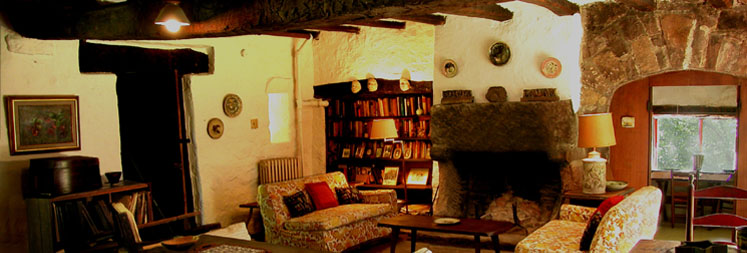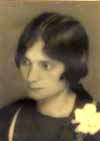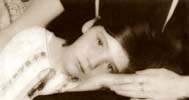|
|
The
Personal House
Betty Alswang and Ambur Hiken
Whitney Library Design Publication.
Forty
years ago Henry Varnum Poor, painter, potter, sculptor
was in the vanguard of the move away from the cities. His choice
was the hills in Rockland County.
Of this move he says, "I have now and did have more strongly
years ago ...a young countryman's instinct to dig in against adversity
and even against success . I, as an artist, was never
just arecorder but always wanted to make a world of my own and to
my own instinct for beauty and order and was not at all in love
with the machine made surroundings of our contemporary civilization.
In other words I found it necessary to make my own environment as
much as possible."To make his own environment, in the literal
sense, Poor cleared his hillside of bramble and blighted chestnut
trees and with pick and shovel dug the footings. In fact, he gained
his building experience from tackling the foundations and basement
(where, he says, the mistakes do not show) and by the time he reached
first floor level was quite adept.
In France, during World War I, the French farmhouses, built by their
owners, had shown Poor what could be done with effort and ingenuity
without specific training. Building his own house a
little after the style of the French farmhouse, he hauled stones
from
a nearby sandstone quarry (one from which many of New York's brownstone
houses had been built) and sawed his trees for lumber.
|
|
|
Poor
was not seeking a return to the primitive but rather the complete
experience of creative control. Having effectively achieved this
Poor and his wife Bessie Breuer, the writer, have lived here eversince,
raising a family, continuing their work, adding to and changing
the house as needs demanded.Rough plastered walls, heavy wood beams,
broad plank flooring, and massive stone are common throughout the
house. This staircase curves up from the corner of the living room;
at its foot area bench and table made by Poor, as is much of the
other furniturein the house.
At
the other side of the same room is this massive hewn stone
fireplace. Poor even devised the winches and stone boats with which
the huge blocks for fireplace and hearth were engineered into place.
Examined
closely this part of the room reveals a fairly familiar
arrangement. The sofas match and tables, bookcase, windows, and
archway have been seen in this pattern many times. Yet the immediate
impact is of an entirely different nature and one whichcan only
be explained by the quality of the room's sculptural elements. It
is these elements that many architects are now seeking as answer
to the overuse of the restrictive module and window wall in today's
design.
And what of the man himself? What little of him that has not
already spoken through his words or his home is purely biographical.
His first interest was in ceramics which was entirely self taught.
For ten years after his first-and very successful-exhibition he
devoted himself entirely to this field. It is generally recognized
that Poor has probably done more than any one person in lifting
the stature of American ceramic art to its present vigorous and
respected level. A year 'off' spent in painting resulted in another
successful exhibition from the evidence of which The Newl Yorker
magazine critic adjudged him to be "in the front rank of America's
first ten." Since then Poor has divided his time between painting
and pottery (the latter including ceramic sculpture). He also teaches
at the Skowhegan School of Painting and Sculpture in Maine, of which
he is the founder and President. Further insight into the man, Poor,
is gained from his book, A Book of Pottery- From Mud Into Immortality,
published by Prentice-Hall in 1958.
Its dedication reads "in a year of Outer Space and Sputniks
this book is dedicated to EARTH."
|


